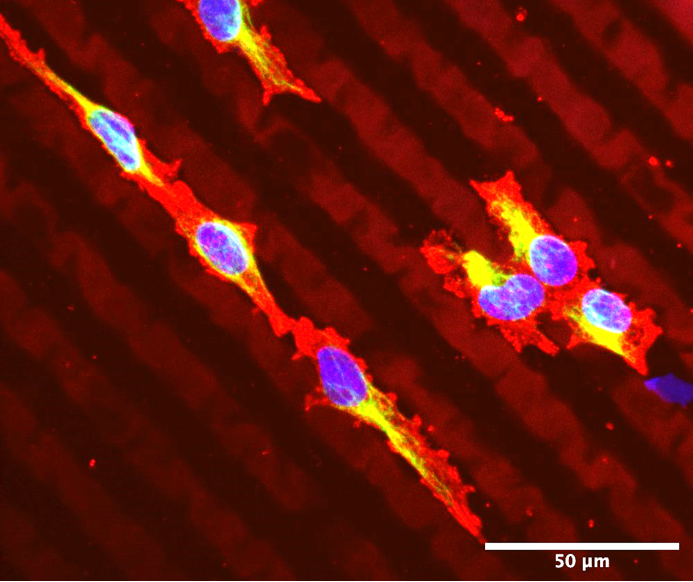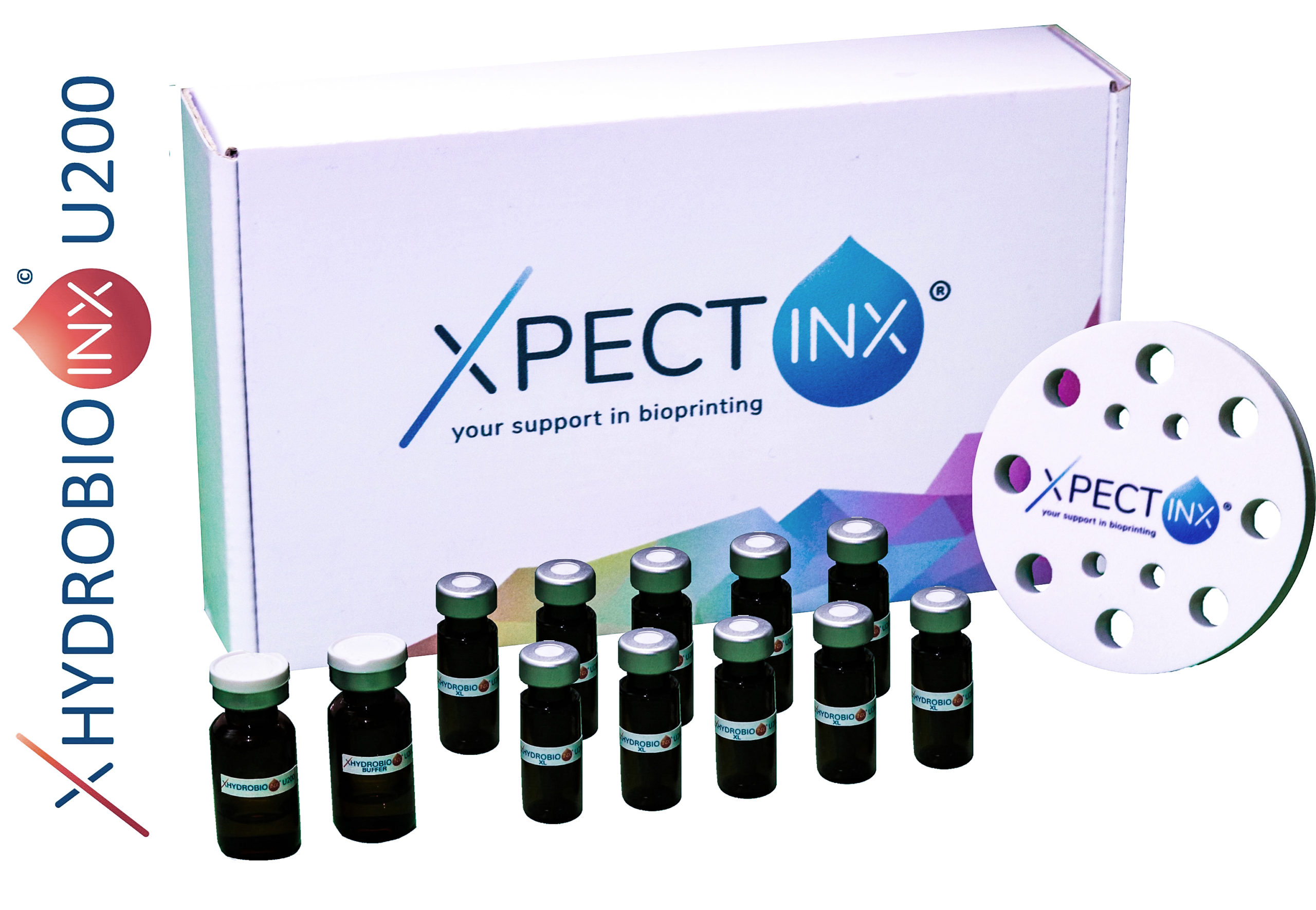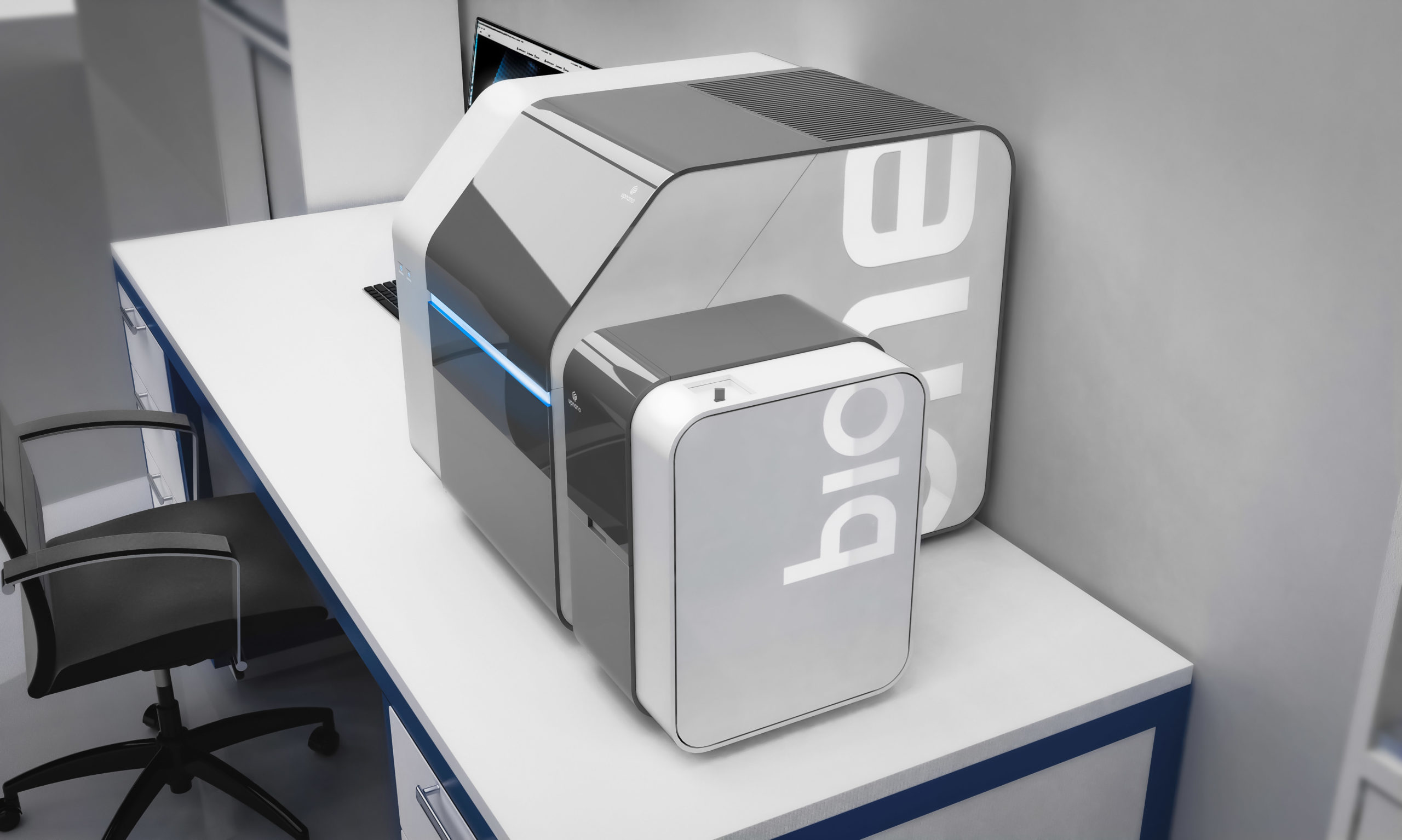UpNano mimics natural tissue topography for biomedical research
The combination of a 2Photon 3D printer with an innovative hydrogel-based bio-ink enables direct printing of 3D structures with living cells at the meso and micro scale. Developed by Vienna-based UpNano GmbH, NanoOne Bio is a printer based on the successful NanoOne range of laser-powered 2Photon 3D printers, which are capable of building structures over 12 orders of magnitude.
The new hydrogel was developed together with Belgian company Xpect INX, a spin-off specialising in the development of biocompatible materials for the 3D (bio)printing industry. It is the only commercially available resin that enables the embedding of living cells directly from a culture plate into high-precision 3D-printed structures for biological applications.
Two-dimensional cell cultures have been the standard in pharmaceutical preclinical R&D and biomedical research in general for many decades. However, there is growing evidence that these models inadequately represent cellular interaction at the 3D level in living systems. As a result, drug development based on 2D systems is often misguided, leading to unfruitful R&D costs in the billions of dollars.
Until now, the construction of complex and highly accurate 3D structures with embedded living cells has been hampered by the lack of suitable materials and printing systems. Thanks to the joint development of a novel hydrogel-based bioink by Xpect INX and UpNano, in combination with UpNano's new printing model, this endeavour has now become a reality. Combined competences
Combined competences
"The combined competencies of UpNano in developing 3D printing devices and Xpect INX in developing innovative materials for 3D printing have been a good fit," comments Peter Gruber, head of engineering and co-founder of UpNano. "Together we have developed X Hydrobio INX U200, a highly biocompatible hydrogel, while offering a 2Photon 3D printing device that offers the widest range of printed dimensions on the market."
X Hydrobio INX U200 is a water-soluble hydrogel that enables the transfer of cell cultures from 2D culture plates into complex 3D structures. "The gelatin-based X Hydrobio INX U200 is specifically designed to encapsulate different cell types, enabling the creation of complex 3D microtissues," says Jasper Van Hoorick, project manager at Xpect INX. "The hydrogel mimics the natural cellular environment and is biodegradable, allowing cells to gradually replace the material with newly formed tissue."
The gel solves the problems encountered with standard growth media on which cell cultures are incubated in a 2D manner. The hydrogel with the living cells can then be fed directly into the NanoOne Bio - a high-precision 2Photon 3D printer developed by UpNano. Extensive research has shown that the NanoOne Bio's 780nm red light laser is not harmful to living cells, even at the exceptionally high power at which NanoOne printers operate. In fact, the high laser power, unique to UpNano's 2Photon 3D printing systems, allows the use of optics that enable the rapid fabrication of cm-sized structures with exceptionally high precision down to the nanoscale.
The combination of X Hydrobio INX U200 and the NanoOne Bio opens up new possibilities in biomedical research and development, both in industry and academia. Recognising the enormous potential, Prof. James J. Yoo, Wake Forest Institute for Regenerative Medicine (USA), decided to advise UpNano on future developments. The renowned expert in tissue engineering and biofabrication will join the company's advisory board from April 2021 and will guide the continuous development of novel applications for biomedical research and development. Simulation of natural growth conditions
Simulation of natural growth conditions
Labs-on-chip will now be possible not only with unprecedented precision, but also directly with embedded living cells - saving time and improving the significance of the results. It is now possible to create surface structures that resemble natural tissues (biomimetic structures) and allow an almost natural interaction between the living cells and their growth environment.
"Cells grown in 2D on a culture plate on standard growth media encounter an anything but natural physical environment and a lack of interaction with the surrounding cells in all directions as seen in living tissues," explains Denise Mandt, Head of Marketing and Business Development and co-founder of UpNano. In biomedical research and development, it is well known that such a lack of 3D cell-to-cell contact negatively affects the interpretation of results obtained on cell models for human applications.
The NanoOne Bio in combination with the newly developed X Hydrobio INX U200 kit will significantly change this approach. Pharmaceutical companies and research institutions will be able to design cell models that mimic natural growth conditions in the human body. The NanoOne Bio enables the fabrication of surface structures with highest precision or the design of complex 3D scaffolds with embedded cells in the cm range.
Thanks to specific optical paths, optimised scanning algorithms and proprietary adaptive resolution technology, the NanoOne systems also offer significantly faster production times than other systems - advantages that have been recognised by customers from industry and academia alike. The range extension for customers in biomedical research has already met with great interest.

 Deutsch (Germany)
Deutsch (Germany)  Polski (PL)
Polski (PL) 










